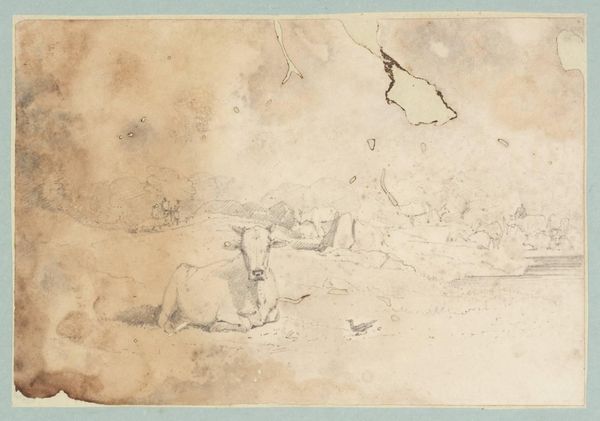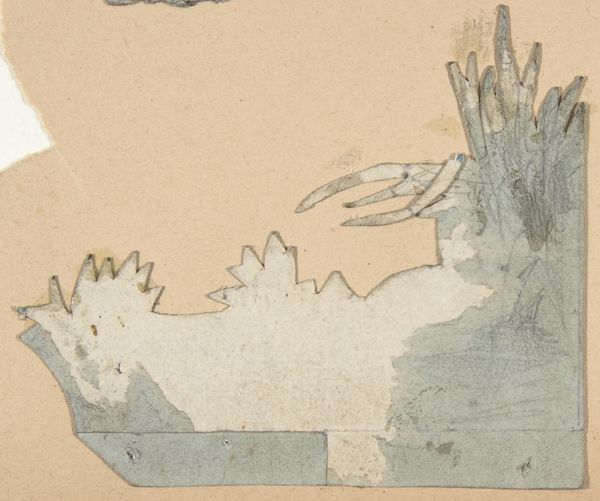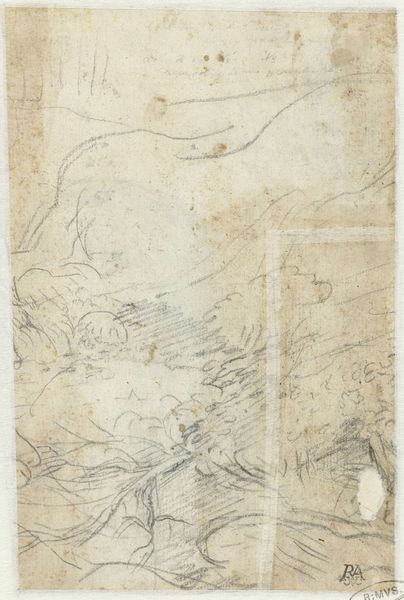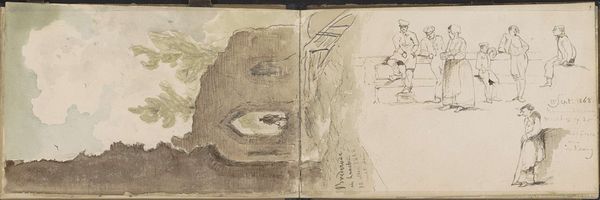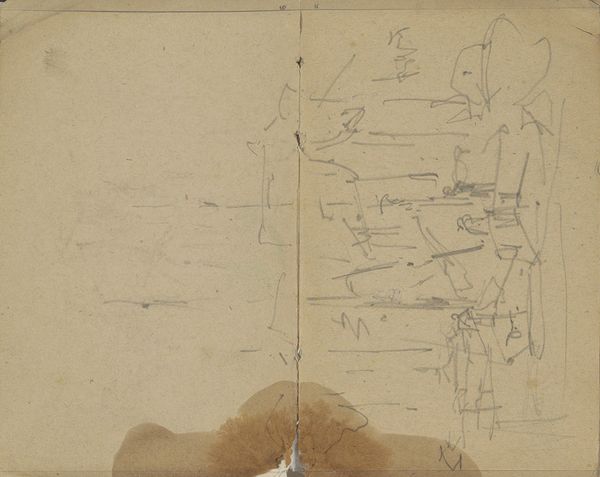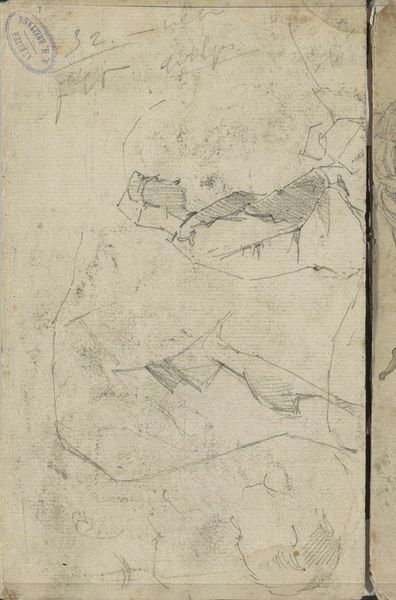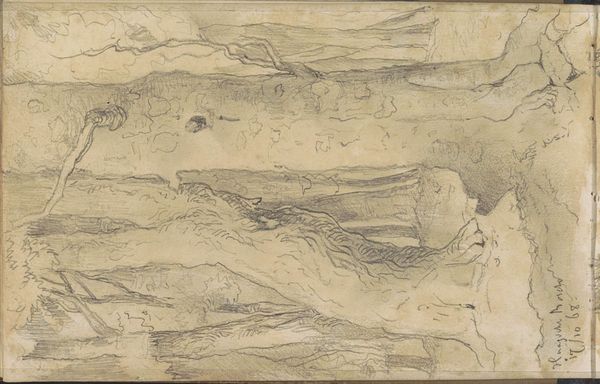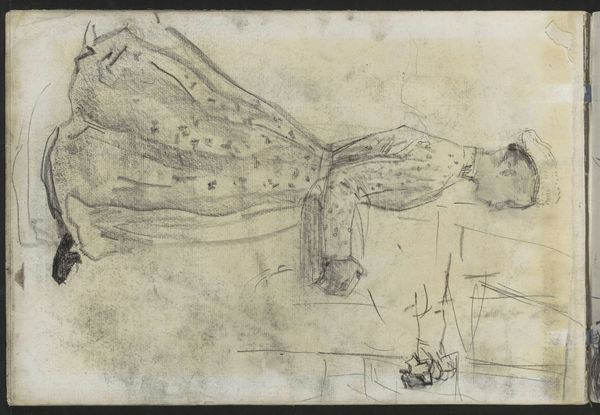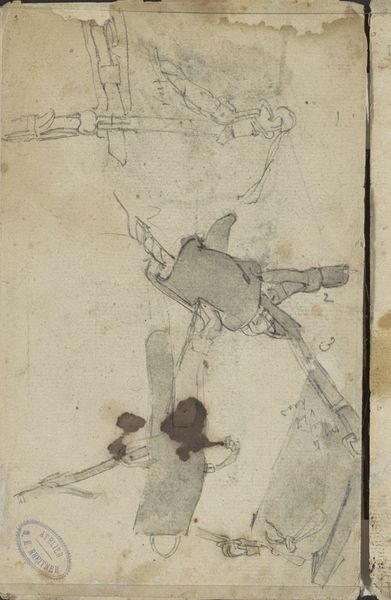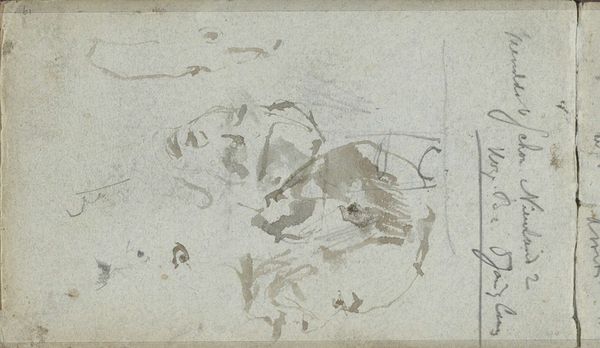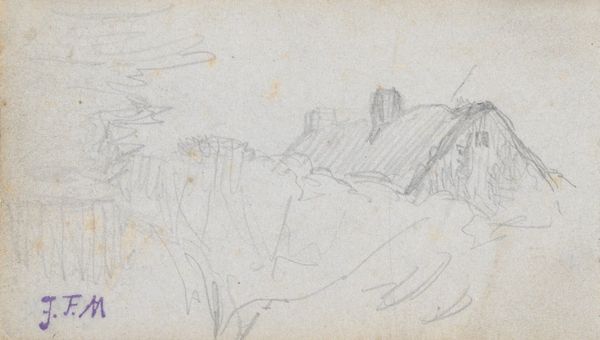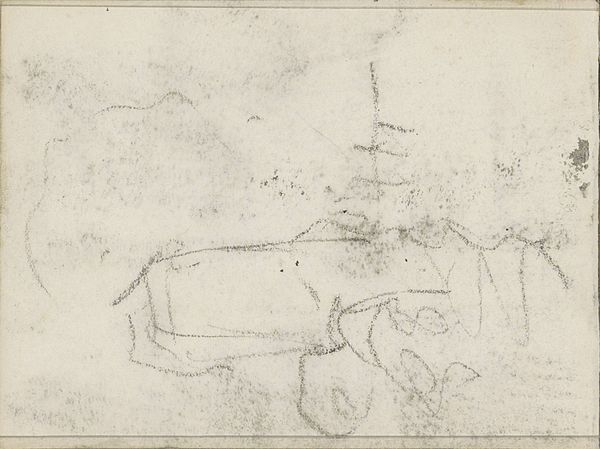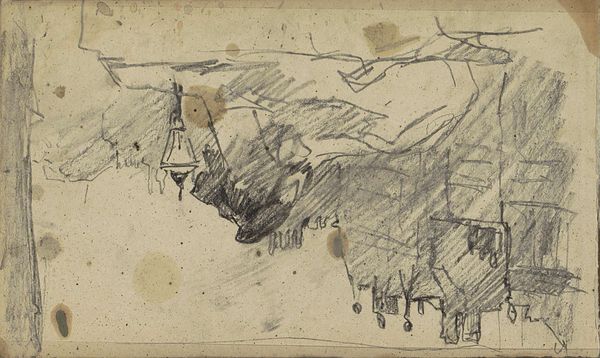
Copyright: Rijks Museum: Open Domain
Editor: Here we have "Koe", a pencil and watercolour drawing on paper by Johannes Tavenraat, dating from 1864 to 1880. The tones are very muted, mostly greys and browns, which gives the sketch a somewhat melancholy air. What do you see in this piece? Curator: Beyond the Romantic style and the clear depiction of a cow – "koe" being the Dutch word for cow – I find myself wondering about its intended function. Was this simply a study, perhaps for a larger, more finished painting? The looseness of the lines suggests spontaneity, but the subject matter – a common farm animal – also raises questions about its audience. Who would have been interested in acquiring such a drawing? Editor: That's a good point. I hadn't considered the social context. Would depictions of rural life have held a certain appeal for urban audiences, maybe as a form of nostalgic escapism? Curator: Precisely. Consider the rapid urbanization happening in the Netherlands during that period. Images of the countryside might have represented a longing for a simpler, perhaps idealized past, especially for those who felt disconnected from agrarian life. This piece might tap into a sense of national identity rooted in the land. Who consumed these images reveals the power of social mobility during the rise of museums and galleries in Europe. Editor: So the sketch isn’t just about the cow itself, but about what it represents to a changing society? Curator: Exactly. It embodies ideas about national identity, societal longing, and how art responds to broad socio-economic shifts. Even a simple sketch can carry significant cultural weight. Editor: I never would have thought of all that just by looking at a cow! Thanks for opening my eyes to the wider story this artwork tells. Curator: My pleasure! It's these connections that make art history so fascinating.
Comments
No comments
Be the first to comment and join the conversation on the ultimate creative platform.
